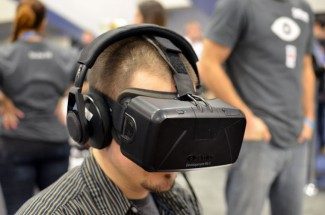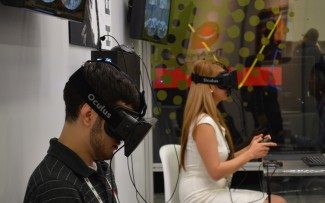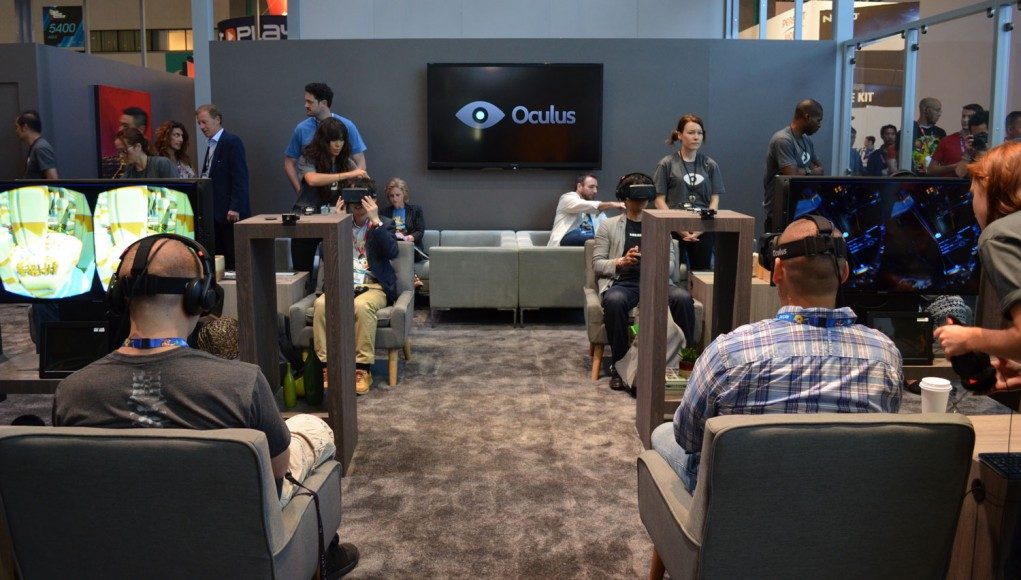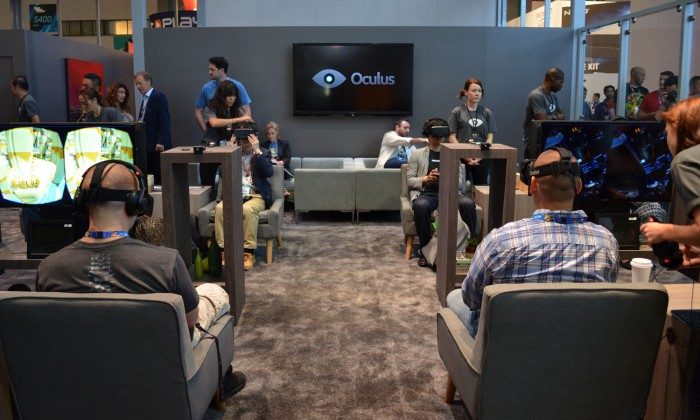Guest contributor Kevin Williams brings us a detailed guide on the many considerations to be made when giving a mass demonstration of virtual reality hardware to the public.
A Wider FOV is a semi-regular feature from Road to VR guest contributor, Kevin Williams, which casts a broader light on the realm of virtual reality and closely industries.
There has been a lot of talk about the investment that Oculus VR are making into the promotion of the Rift DK2 through actual demonstrations at events and conferences; rather than focusing at this point on flashy advertising, Oculus VR have turned to the VR community to get the message out on what the customer experience can be using these VR platforms. Demonstrations are a very popular social aspect of the VR community.
Oculus VR are not the only one’s holding audience demonstrations of their hardware on a regular basis—and it was suggested that there should be some fundamental rules laid down as a ‘guide’ on the ‘best practice’ for the use of VR headsets in public as we become inundated with new events. This is a light touch observational and advisory piece and does not hope to deal will all the issues in detail but initially bring them to attention.
As one of those that has been on the receiving end of such demonstrations, as well as more often the delivery side of virtual reality demonstrations (VRD) at conventions, lectures, exhibitions, trade conferences, entertainment venues, sales launches, investor meetings and media events (to name a few)—I thought it would be valuable to pass on some sage advice and wisdom regarding the key issues to consider when working in this unique approach in virtual presentations.
A Guide to Giving Virtual Reality Demonstrations
1. Equipment (The Platform)
 Where the users are expected to experience the VR demonstration is as important as the experience they will be seeing. A need for an uncluttered approach to the demonstration environment and what goes into this is essential—even for those that have to rush to set up on a table in a school hall.
Where the users are expected to experience the VR demonstration is as important as the experience they will be seeing. A need for an uncluttered approach to the demonstration environment and what goes into this is essential—even for those that have to rush to set up on a table in a school hall.
VR Headset – What many will feel is the most important part of the demonstration. The issues of ensuring the operators understand the lens and head adjustment is essential as well as the cleaning issues (see below). What will your policy be regarding wearing glasses, and will you have any restrictions? All need to be considered and added to the signage and operator briefing.
Also remember that the VR headset is a means for some subtle advertising/promotion—see if you cannot customize the VR headset you are using by placing the corporate logo or brand (and URL) of the demonstration on the system—especially as the image of people wearing the VR headset at your booth will be the main picture snapped by media and audience alike.
On the subject of the VR headset and all of the system but in particular the VR headset—replacements! Be ready to have a good supply of replacement units especially the more you run the demo. Remember these are at this time developer kits with the commercial versions to come many months in the future. The Oculus Rift DK1 and DK2, as well as all the other new VR headsets, are not currently developed for mass-audience usage requiring constant on-and-off usage with adjustments for each user. It is important to keep this in mind when considering large audience application.
Finally, the implication of external forces impeding prototype and new designs. As has recently been seen with the Sony’s Project Morpheus VR headset, the need to be aware of the vulnerability of the hardware at an early stage of development is essential, and in the case of the Project Morpheus system there is the issue of flash photography! When demoing the system to media, it has been noticed that the operators have started to put the cleaning cloth over the VRh headset to negate damage caused by flash degrading the display, (also be aware of the lens interaction with direct sunlight, as seen with the advisory on the Oculus Rift DK2).
 Audio – Unless using just ambient audio systems (sound cones/speakers), the demonstration will need to have headphones (do not consider using ear-buds for demonstrations). A long discussion on the best headphones can be had with technical experts in this field. Just be aware of the need for extended cabling and a powerful audio system able to run the demonstration. Ensure that the loading and unloading briefing for the operators makes light of the need to give special attention for audio adjustment (headsets need to fit different heads as do headphones) and also consider replacements.
Audio – Unless using just ambient audio systems (sound cones/speakers), the demonstration will need to have headphones (do not consider using ear-buds for demonstrations). A long discussion on the best headphones can be had with technical experts in this field. Just be aware of the need for extended cabling and a powerful audio system able to run the demonstration. Ensure that the loading and unloading briefing for the operators makes light of the need to give special attention for audio adjustment (headsets need to fit different heads as do headphones) and also consider replacements.
Interface – How the user interacts with an ‘interactive’ demonstration is complicated. It has to be intuitive and it also has to be forgiving for first-timers. If you are offering interactive demonstrations, the control interface should be simple, and based on the target audience. The Microsoft Xbox 360 controller seems to fit the bill. Though there can be a bit of ‘button overload’ for those unfamiliar with gamepads. Other interfaces such as 3D mice and wands have their place, but this is a difficult aspect that’s unique to each demo.
Another approach is a driving or flying position—a “simulator rig” can be perfect, having the individual sit-down and also having them utilize a familiar flight stick, yoke, or steering wheel. The problems that some companies have seen with driving simulators and disorientation (if not worse) means that this may not be best as a universal approach.
This also brings us to the ‘seated’ argument—it is best to have the individual sit-down and then have the operator adjust the systems directly onto their head? The idea of ‘standing’ demos are a lot harder dependent on operators height in comparison to user and the issue of fine tuning the tracking for each user. Sitting works hands down—though this will change with development.
 Enclosure or Station – Where the user resides will be need to be laid out simply—allowing the person to don the VR system, place their belongings, and also able to move freely without hitting the attendant or other users. It is also great if a purpose-built environment is laid out with consideration for the vulnerability of the VR headset and its user: avoidance of hard corners and surfaces, to negate dropped or hit items (including elbows). Also having a fan able to be called into action is useful especially in some non-air-conditioned environments.
Enclosure or Station – Where the user resides will be need to be laid out simply—allowing the person to don the VR system, place their belongings, and also able to move freely without hitting the attendant or other users. It is also great if a purpose-built environment is laid out with consideration for the vulnerability of the VR headset and its user: avoidance of hard corners and surfaces, to negate dropped or hit items (including elbows). Also having a fan able to be called into action is useful especially in some non-air-conditioned environments.
One aesthetic addition to the station layout would be to include a repeat monitor/screen for the operator and audience to see what the user is seeing. This is helpful giving advice if the user is crashed into a wall and pointing the wrong direction. It also allows promotion of the demonstration to those waiting in the cue-line (also a repeat speaker of the experience is useful). Do not forget to include information about what the game/demo is and the URL to a site for more information—and include a link for “comments” (or even a Twitter hash tag) for those that experience the demonstration and offer views on how to improve the experience (free product testing!).
One word of advice regarding the technical support—ensure you have a properly equipped tool box to deal with all the basic possibilities and removing the mad dash to the local electrical store. I cannot underline enough the need for at least one roll of duct tape—it holds the Universe together and will also hold your demonstration together!








